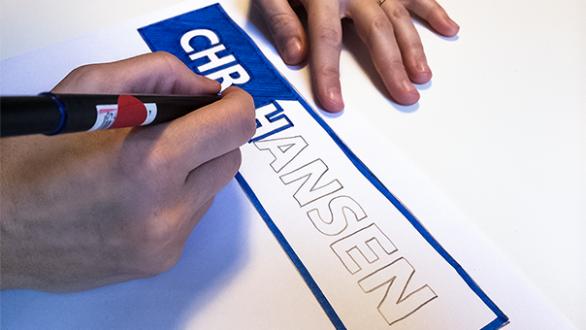
In the last months of the year Levende Streg are always full very busy in relation to strategic visualization. This is where we help a company with the visualization of a strategy, targeted relevant stakeholders.
STRATEGIC VISUALIZATION
Strategic visualization is important for companies, because a strategy must be understood in order to be complied with by the company’s employees. At the same time, the strategy should feel good to follow and it should be motivating.
Motivation of employees is always important. Studies show that the most successful people visualize their ideas and goals, thus creating motivation for themselves and their employees. When your employees can “see” the strategy for themselves, you can achieve the greatest success.
TO VISUALIZE A STRATEGY
At Levende Streg, we collaborate with the individual company and specialists to visualize their strategies and goals the best possible way
The company gives their input on what their main topics were concerning the strategy and why it was important to communicate these particular points. Then we outlined our visual ideas, combined them, got them approved and finally drew and colored them into a full visualization.
The process of working with visualizations is an iterative one. It really helps teams and leaders to be part of the process. So they dive even deeper into the strategy. That means that during the work with the visualization itself our customers become more and more focuessed and they really close in on the core of what they want to communicate with the visualization of the strategy. So often the process it’s quite an eye-opener to managers and teams.
WHEN IT’S TIME FOR A CHANGE
Change management is an essential part of every manager’s daily life. Because of a rapidly evolving market, companies must keep pace with customers demands and demands from other businesses.
Change management is the process that ensures businesses go through the transitional fases smoothly – to improve and optimize internal and external processes.
Change is good, but it can also have its negative aspects. Employees can become stressed and uncertain about the future changes if they can’t see the broad picture, or if they don’t understand how such changes will affect them.
The solution is to create overview, energy and motivation. But how? The largest high performers use visualization to form their plan of action. It helps to create an overview and reduce the negative aspects that may be associated with the change process.
STRATEGIC VISUALIZATION = OVERVIEW
As mentioned before visualizations create a great overview and really motivates people. Visualizing processes can create a better understanding and dialogue among employees. At Levende Streg we specialize in communicating complex content in a visual informative and interesting way.
DO YOU NEED HELP VISUALIZING YOUR STRATEGY?
Do you also need help with the visualization of a strategy?
Contact us and let us talk about your project and your wishes.